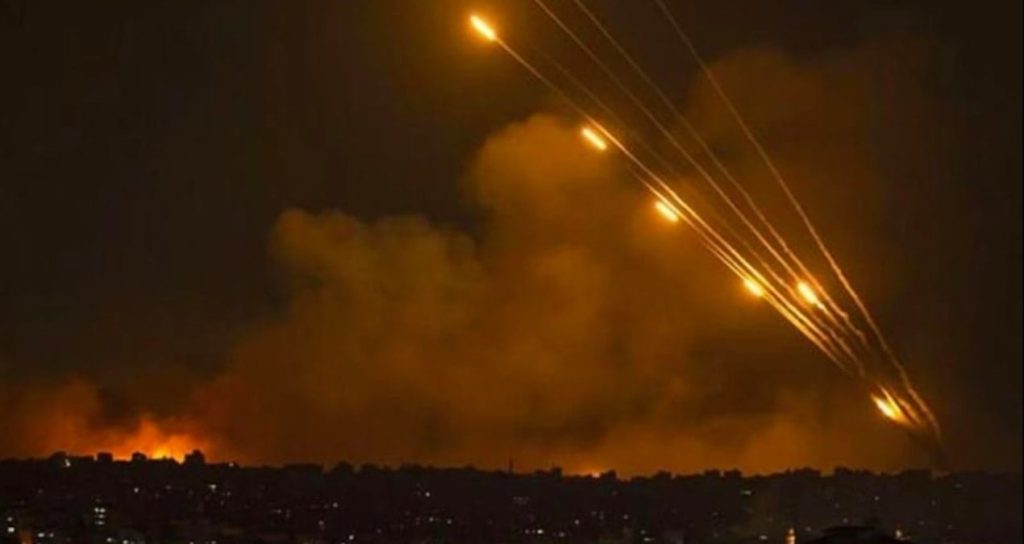The escalating tensions between Israel and Iran reached a new peak on June 17, 2025, when the Israeli army announced significant military operations in western Iran. Targeting strategic resources, particularly oil infrastructure, the Israeli forces conducted airstrikes designed to hinder Iran’s military capabilities. In response, Iranian media reported missile attacks aimed at Israel, marking a dangerous escalation of hostilities that has drawn the attention of global leaders.
| Article Subheadings |
|---|
| 1) Details of the Israeli Attacks on Iranian Infrastructure |
| 2) Iranian Retaliation with Missile Strikes |
| 3) US Involvement in the Ongoing Conflict |
| 4) International Reactions and Statements |
| 5) Future Implications of the Escalation |
Details of the Israeli Attacks on Iranian Infrastructure
On June 17, 2025, the Israeli military declared the successful completion of targeted operations against various locations in western Iran, specifically focusing on the Isfahan region. This area is crucial for Iran’s oil production and military logistics, which poses a strategic threat to Israel. Utilizing advanced warplanes and missile systems, Israel aimed to cripple the Iranian regime’s ability to sustain military actions against its neighbors and deter future volatility in the region. The attacks reportedly inflicted significant damage on Iranian infrastructure, leading to elevated tensions between the two nations.
Iranian Retaliation with Missile Strikes
Following the Israeli airstrikes, Iranian media outlets claimed responsibility for launching missile attacks targeted at Israel. The strikes were framed as a direct response to the damage inflicted upon Iranian assets, particularly noting an attack on a key oil refinery. The escalation of missile exchanges signifies the deepening rift between the two nations and raises concerns about potential spillover effects across the Middle East. Iranian officials emphasized their determination to retaliate against any military aggression, reinforcing a narrative of national defense aimed at galvanizing public support and regional alliances.
US Involvement in the Ongoing Conflict
Amidst the escalating hostilities, US President Donald Trump asserted that American forces had achieved air superiority in the Iranian skies. In his statements, he declared that despite Iran’s considerable military investments in anti-air defenses, they could not compare to US capabilities. The US government has been strategically strengthening its military presence in the region, with reports suggesting that additional war jets were being deployed to support Israel. Trump also made controversial remarks indicating the potential for US troops to be drawn into the conflict, intensifying fears of a wider regional war.
International Reactions and Statements
Global leaders are closely monitoring the conflict, with varied reactions emanating from different nations. Notably, French President Emmanuel Macron cautioned against regime change in Iran, labeling such a strategy a severe misstep. He reiterated the importance of stability in the region, emphasizing that while Israel has the right to defend itself, aggressive military actions could further complicate the already volatile situation. The international community appears divided, with some supporting Israel’s right to act against perceived threats, while others condemn the potential for escalating violence that could lead to widespread regional instability.
Future Implications of the Escalation
The recent military exchanges between Israel and Iran could set a dangerous precedent for future interactions. With both nations demonstrating a readiness to engage in armed conflict, the potential for a broader war looms large. Analysts suggest that the strategic objectives behind these military moves are multifaceted, including not only immediate defense but also potential shifts in regional power dynamics. The involvement of the US could further complicate matters, raising questions about its long-term commitments to allies in the Middle East and the potential for diplomatic resolutions being sidelined in favor of military solutions.
| No. | Key Points |
|---|---|
| 1 | Israeli military operations on June 17 targeted critical oil facilities in Iran. |
| 2 | Iran retaliated with missile strikes aimed at Israel following the airstrikes. |
| 3 | US President Trump confirmed the superiority of US air capabilities over Iran. |
| 4 | Macron warned against aggression that leads to regime change in Iran. |
| 5 | The conflict raises concerns over potential regional stability and broader implications. |
Summary
The ongoing military exchanges between Israel and Iran underscore the escalating tensions that could destabilize the entire Middle East. With both nations taking aggressive measures and the involvement of the US, the situation is fraught with uncertainty and potential for broader conflict. Leaders worldwide are urged to advocate for diplomatic solutions as the human and geopolitical costs of military action continue to rise.
Frequently Asked Questions
Question: What triggered the recent military actions between Israel and Iran?
The Israeli military launched airstrikes targeting strategic oil facilities in Iran, leading to retaliatory missile strikes from Iran aimed at Israeli territory.
Question: How has the United States responded to the escalation?
The US has shown support for Israel by reinforcing military presence in the region and affirming air superiority over Iranian defenses, as stated by President Trump.
Question: What are the implications of this conflict for regional stability?
The ongoing conflict poses significant risks for regional stability, as military aggressions could provoke wider confrontations involving multiple nations and impact global political dynamics.


